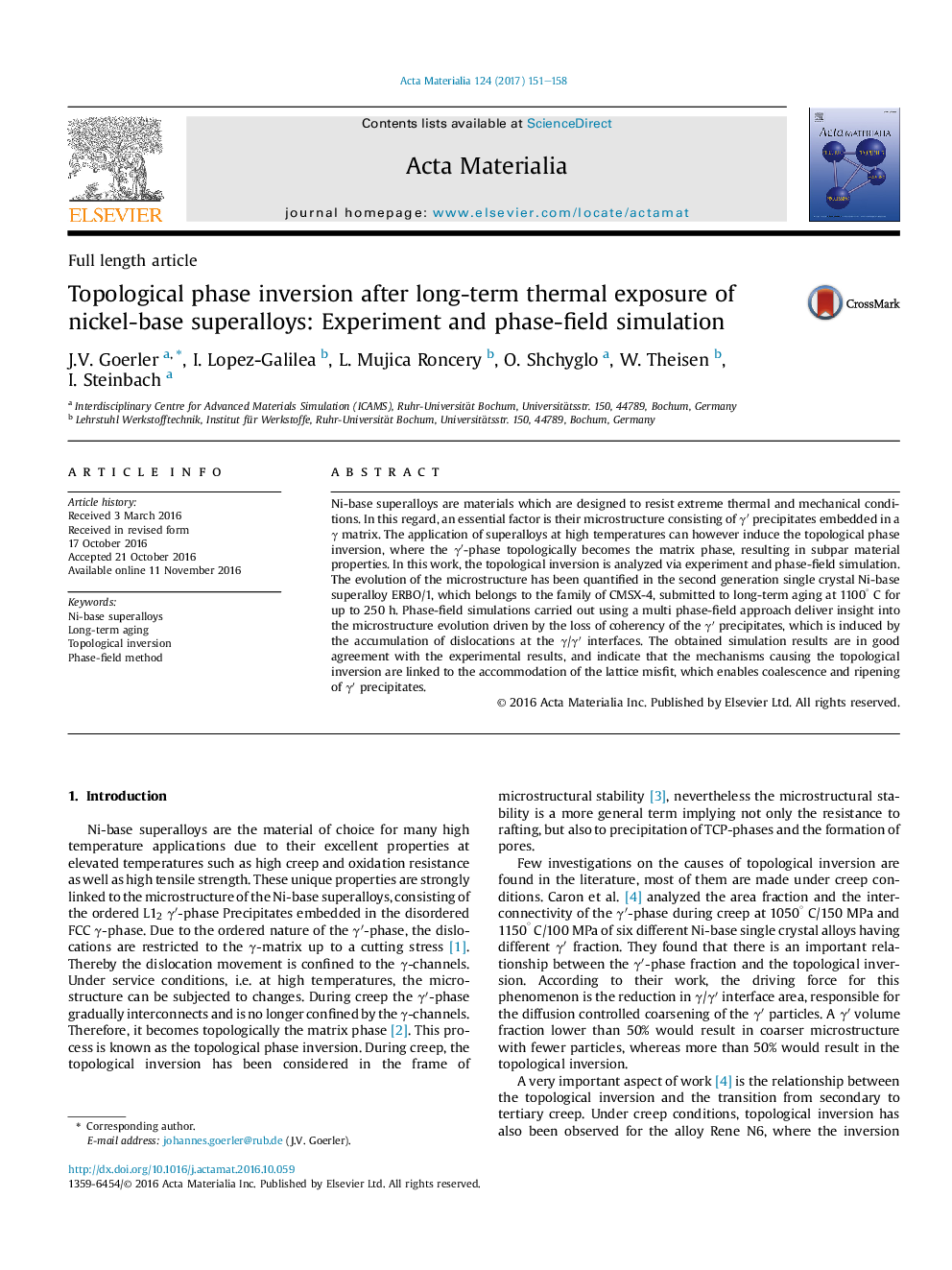| Article ID | Journal | Published Year | Pages | File Type |
|---|---|---|---|---|
| 5436436 | Acta Materialia | 2017 | 8 Pages |
Ni-base superalloys are materials which are designed to resist extreme thermal and mechanical conditions. In this regard, an essential factor is their microstructure consisting of γⲠprecipitates embedded in a γ matrix. The application of superalloys at high temperatures can however induce the topological phase inversion, where the γâ²-phase topologically becomes the matrix phase, resulting in subpar material properties. In this work, the topological inversion is analyzed via experiment and phase-field simulation. The evolution of the microstructure has been quantified in the second generation single crystal Ni-base superalloy ERBO/1, which belongs to the family of CMSX-4, submitted to long-term aging at 1100° C for up to 250 h. Phase-field simulations carried out using a multi phase-field approach deliver insight into the microstructure evolution driven by the loss of coherency of the γⲠprecipitates, which is induced by the accumulation of dislocations at the γ/γⲠinterfaces. The obtained simulation results are in good agreement with the experimental results, and indicate that the mechanisms causing the topological inversion are linked to the accommodation of the lattice misfit, which enables coalescence and ripening of γⲠprecipitates.
Graphical abstractDownload high-res image (349KB)Download full-size image
